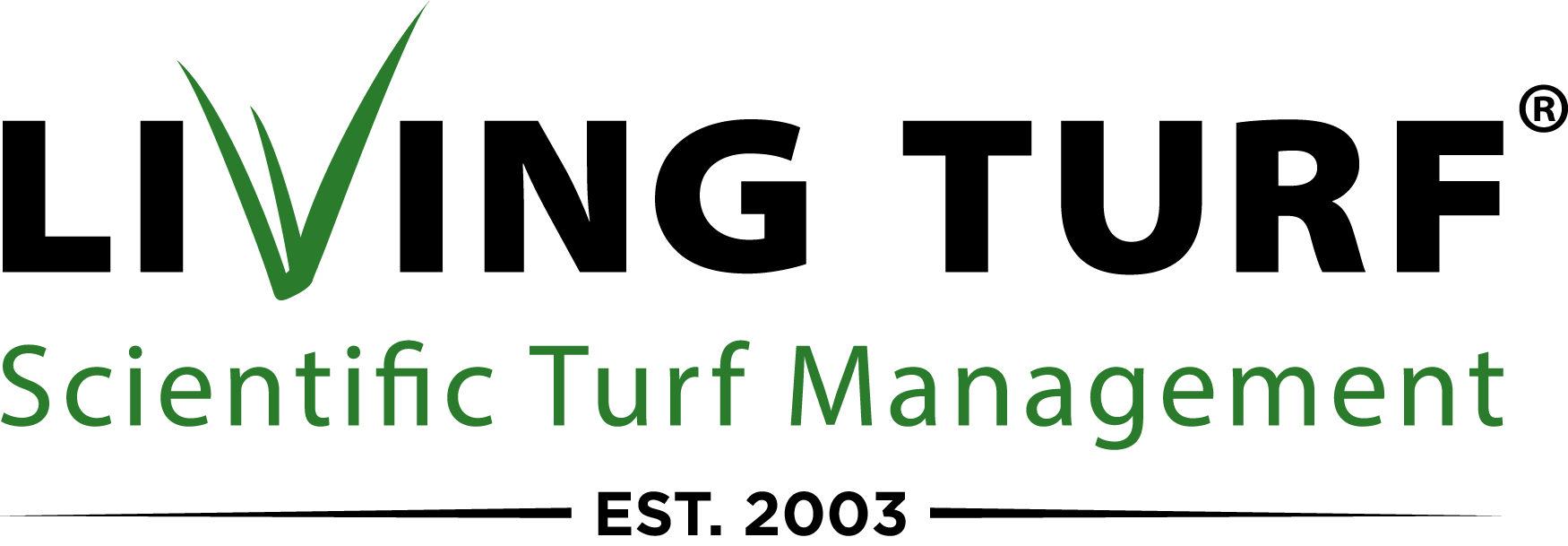Thatch Management: Building Firmer, Healthier Surfaces
Below we explore the causes and limitations of traditional management—and introduce Thatchzyme, a targeted enzymatic solution designed to accelerate natural breakdown and support healthier turf.
Quick links:
Thatch vs. soil organic matter—what’s the difference?
Thatch is the layer of undecomposed or partially decomposed plant residues that accumulates above the mineral soil, immediately beneath the turf canopy.
Soil organic matter includes living and partially decomposed plant material including thatch, living soil microorganisms and well decomposed organic compounds such as humus.
Why is thatch a problem?
A level of thatch is beneficial as it cushions traffic and buffers temperature swings. However, as it thickens, thatch drives persistent issues:
1. Reduced firmness & infiltration
Elevated thatch in sand based rootzones reduces the large macro pores that allow air movement into the soil. Additionally, infiltration slows, and excess moisture can be retained. The result is soft, spongy surfaces with inconsistent pace.
2. Higher disease pressure & reduced product efficacy
Dense thatch traps moisture and creates low oxygen microenvironments that favour pathogens. Dense thatch also limits fungicide movement through the profile reducing product efficacy.
3. Surface inconsistency, stress susceptibility & playability issues.
Excess thatch leads to scalping, uneven drying, variable green speed, and a greater risk of heat/moisture stress which places turf under pressure.

What makes up thatch—and why is it hard to manage?
Thatch is a tightly interwoven layer of living and dead stems, stolons, rhizomes, crowns and roots that accumulates between the green canopy and the soil.
The challenge lies in its composition. Thatch is rich in highly resistant structural components, particularly lignin, which decomposes far more slowly than cellulose and hemicellulose. While soil microbes readily metabolise the latter, lignin requires specific oxidative enzymes such as laccase. These enzymes are naturally extracted by certain fungi but only in small amounts. Therefore, natural breakdown is slow relative to the rate of new plant growth. It is this characteristic of thatch that makes renovation and topdressing necessary.

How can you control thatch?
Up until now the only tools available to Turf Managers are:
- √ Sand topdressing / dusting
- √ Hollow and solid tine core aeration
- √ Verticutting
- √ Nitrogen management including use of beneficial soil biology
Practical limitations of cultural practices
1. Disruption and downtime
Core aeration, heavy topdressing and aggressive verticutting are proven, yet they interrupt play and require recovery windows that are hard to secure in peak seasons.
2. Limited biochemical impact on lignin
Mechanical dilution removes and separates organic matter but does not chemically degrade lignin rich material. As a result, the root cause of slow thatch breakdown persists.
3. Weather driven spikes
Following stressful periods (heat, high humidity, or excessive rainfall), turf often needs more aeration and dusting to restore firmness, raising seasonal disruption and cost.
Introducing THATCHZYME—a novel, enzymatic solution to thatch management
Thatchzyme is a concentrated laccase enzyme solution designed to accelerate the breakdown of lignin, which is the key structural component that makes thatch resistant to natural decomposition. Thatchzyme’s unique formulation technology gives Turf Managers application flexibility, both in tank mix compatibility and watering in. Thatchzyme provides a highly concentrated, sprayable source for even application across the surface.
Use Thatchzyme to complement your sand topdressing and aeration—not as a replacement. An integrated approach including a sound nutrition program helps maintain surface firmness and consistency with less disruption to play.


